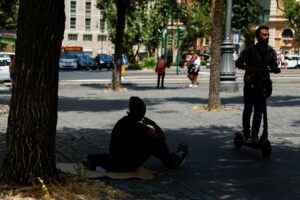ROME — The number of people living in poverty in Italy rose in 2023 to its highest level in about a decade, data showed on Monday, despite an economic rebound since COVID-linked restrictions were eased.
Those living in “absolute poverty” – who were unable to buy essential goods and services – rose to 5.75 million, or 9.8% percent of the population, national statistics bureau ISTAT reported. That’s up marginally from 9.7% in 2022 and the highest since the current data series began in 2014.
Italy’s economy has recovered more strongly from a 2020-21 COVID-induced recession than neighbors such as Germany and France, with an accompanying rise in employment, but the ISTAT report showed the rebound has done little to help its poorest.
The percentage of those in absolute poverty stood at 9.1% in 2020 and 9.0% in 2021, at the height of the pandemic, when the impact of the recession on families was partly offset by numerous government-support measures.
ISTAT defines absolute poverty as the condition of those who cannot buy goods and services needed for “an acceptable standard of living” that ensures they are not confined to the margins of society.
With the exception of a dip in 2019, poverty has risen steadily from 6.9% in 2014, when ISTAT’s data series began.
Last year, Giorgia Meloni’s right-wing government began phasing out a “citizens’ income” poverty-relief subsidy introduced in 2019, ignoring warnings from some economists and the Bank of Italy about the impact on the poor.
The scheme, which ISTAT said helped around a million families to emerge from poverty in 2019, was scrapped altogether from the start of this year, and replaced by a limited subsidy aimed largely at those physically unable to work.
Broken down by region, those in absolute poverty last year stood at 9.0% in the north, 8.0% in the center, and 12.1% in the historically poorer south.
While poverty levels in 2023 increased in the north and center compared with the previous year, it decreased in the south, the ISTAT data showed. — Reuters

